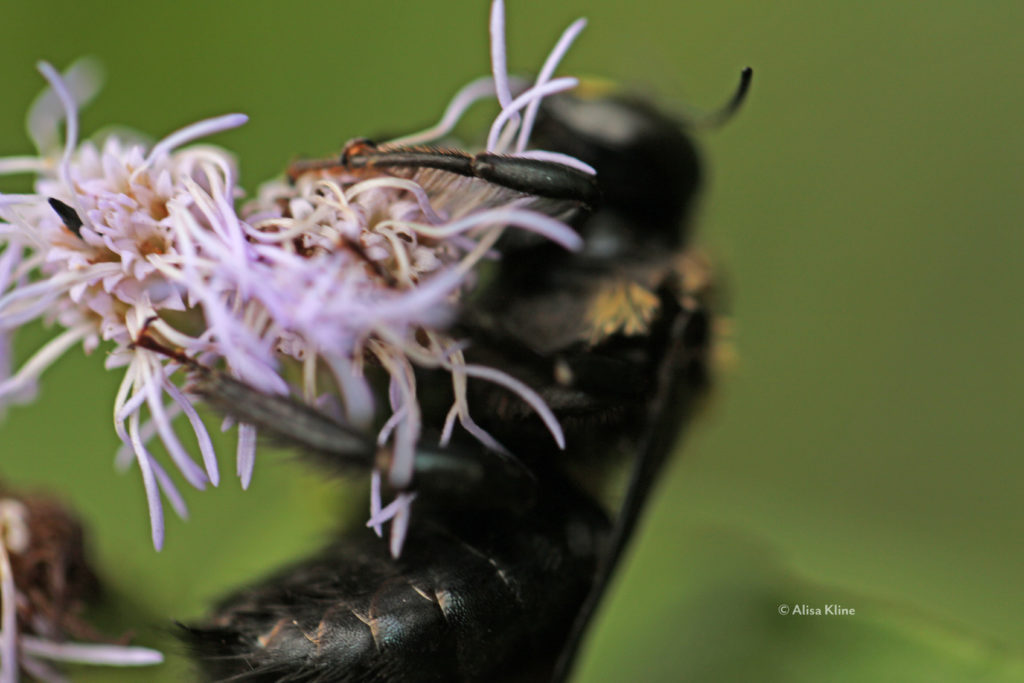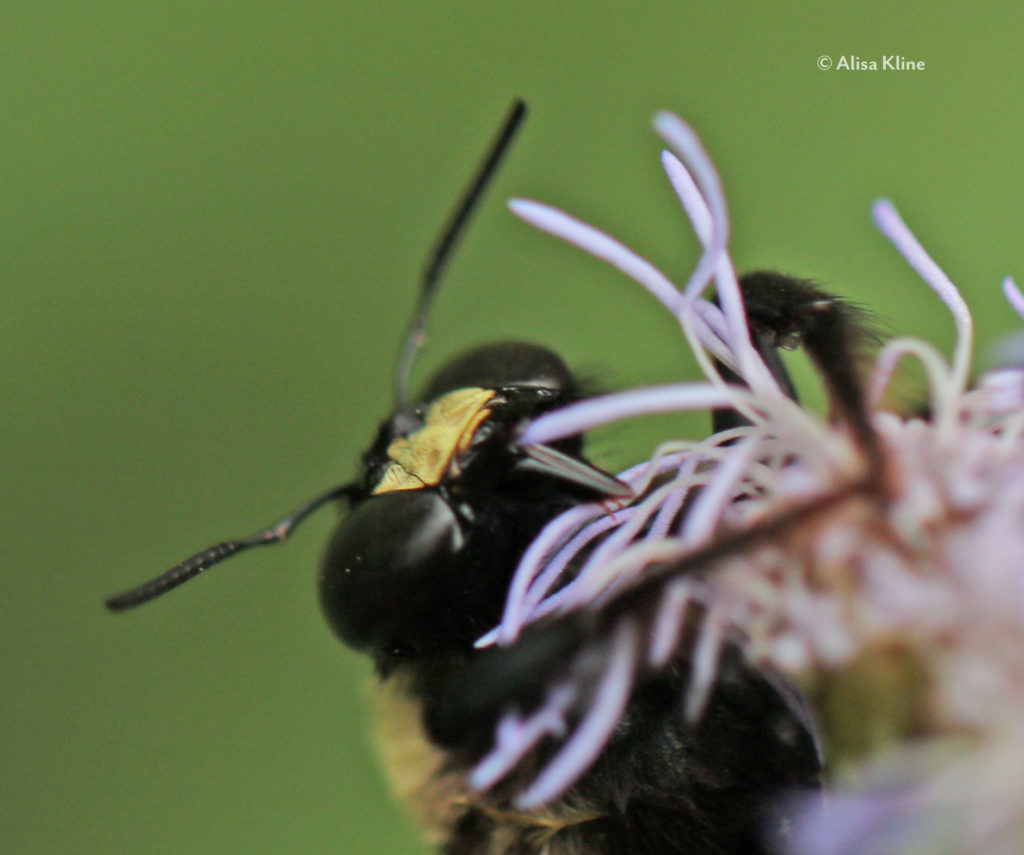Good-bye bee

A quick post this week.
I have been trying to write about anything other than this photo, but I have failed, so meet my friend, the eastern carpenter bee who has done his job well.
At the end of each summer, the solitary native bees (that’s every bee flying around that isn’t a European honeybee) has one last burst of life energy, and a final generation of females mates with a final generation of males and lays the eggs that will result in next year’s abundance (please, we hope) of native bees.
For the most part, they cannot survive the winter. They are cold-blooded and rely on the sun to warm them enough to move around and find food. Some female southern carpenter bees and some bumblebees will hibernate in cold weather and venture forth when the sun warms them enough. But for the most part, they live a single season, if that. The boys are born and live just long enough to breed.
This guy was clinging to a fragrant blue mistflower. He wasn’t dead and it was warm enough that he could have flown if he had any energy left. But all he managed was to wave an antenna; he wasn’t entirely dead yet.
But he had done what he could and he had insured next year’s new generation.
What has broken my heart isn’t that he is nearly dead. It is that he is using his last bit of life to live a bit longer.

His proboscus is completely extended. Those are the huge mandibles he can use to cut through flowers to steal nectar he can’t reach by squeezing down a too-narrow flower.
Even his tongue is protruding. Those little red lines across the flower are parts of his tongue. He is eating or drinking his last. The last thing on his mind seems to be life. And it has broken me.
Next week, will be about the life that carries us through the cold months. But now, as a new year and perhaps a release from this year’s cruelties, one more reminder that life is precious and finite. And renewal is the promise of this world.

